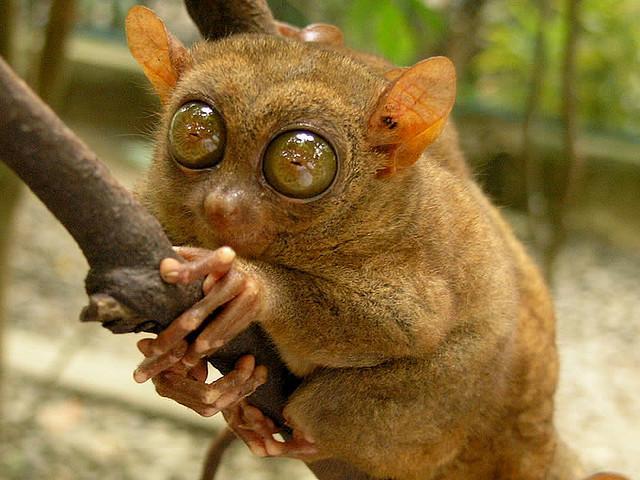
Bohol’s Trademark “Maumag”
A cuddly-looking creature with huge eyes, a tail like a rat's, long hands and feet, and is about 100 millimeters in height, that must have inspired Steven Spielberg when he created E.T. – the Philippine Tarsier.
The tarsier of Bohol is locally known as the “Maumag”. It is a member of the approximately 45 million year old family Tarsiidae whose name is derived from its elongated "tarsus" or ankle bone. The Philippine tarsier was a common sight in the southern part of the island until the 1960s. Since then, the number has dwindled to as few as an estimated 1000 still left in the wild. Once protected by the humid rainforests and mist-shrouded hills, these mysterious primates struggle to survive as their home is cleared for crop growing.

Interesting Facts about Tarsiers:
• The Philippine tarsier measures only about 85 to 160 millimetres in height making it one of the smallest primates. It has been called "the world's smallest monkey" but although they are primates, technically, the tarsiers are not monkeys. According to biology, it belongs to its own suborder under the primates, the prosimii or haplorrhini, while monkeys and apes belong to another suborder, that of the anthropods.
• They are nocturnal animals and should not be disturbed at day time.
• Their main diet is insects and they should not be fed with meat.
• They commit suicide during captivity due to trauma from touching and loud noise.
• They have one of the slowest fetal growth rates of any mammal, taking 6 months to reach a birth weight of 23 grams.
• The average adult is about the size of a human fist and will fit very comfortably in the human hand.
• The Philippine tarsier uses varied means of communication. Although less vocal than many primate species, it uses calls which are often associated with territorial maintenance and male-female spacing. Three different audible calls have been documented, one being its "loud call", a loud piercing single note. When content, it emits a sound similar to soft sweet bird-like twill, and when several tarsiers come together, they have a chirping, locust-like sound. Recently, scientists discovered that these mammals vocalize in an ultrasound frequency range of 70 kHz and can pick up frequencies above 90 kHz.
• The Philippine tarsier is related to the Horsfield's tarsier of Borneo and Sumatra and to several species of tarsier on Sulawesi and nearby islands in the genus Tarsius.
• Although Bohol is best known for its tarsiers, the Philippine tarsier can also be found on the islands of Samar, Leyte, and Mindanao. Because they have been separated for a long time, the tarsiers from these islands have some slight differences from those of Bohol.

A smiling tarsier
How to meet the Tarsiers?
If you want to visit the tarsier, please go to the Tarsier sanctuary in Corella. Although tarsiers are also on display at some other places in Bohol, notably in Loboc, as part of the trip to the floating restaurants on the Loboc River, only here you can see the tarsier in its almost natural habitat. The tarsier sanctuary is also the only place holding the tarsiers legally.










